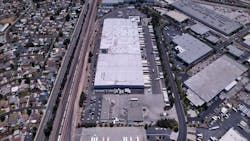Roeth: It’s a wrap, and we learned some valuable lessons
We’ve completely wrapped up Run on Less – Electric DEPOT with the publication of our second and final report, Run on Less – Electric DEPOT: Scaling BEVs in the Real World.
The report solidified our early findings from the Run, which are as follows:
- Small depots are ready for electrification now.
- Electrification of large depots is gaining momentum.
- It’s still taking too long for power to be delivered to depots and for infrastructure to be installed.
- There have been significant improvements in trucks and chargers since Run on Less – Electric in 2021.
- Range can be extended with multiple charging events during a shift or along routes.
- Diversity, passion, and capability of the people involved are helping scale the adoption of electric trucks.
Following the Run, we spent a lot of time sorting and analyzing the data. We even convened a data workshop in March 2024, where we invited participants to present their own analysis of the Run data. We used Chatham House rules during the workshop, which meant we would not disclose the names of the individuals sharing data, but the cost of entry to the event was that you share your data analysis.
The result of the internal and external analysis was that we came to the following four additional findings.
- Electric vans, trucks, and heavy-duty tractors are on the road today and are performing well in many duty cycles.
- Infrastructure, both at the depots and strategically placed along freight corridors, is needed now.
- Heavy-duty tractor OEMs should make cost and weight improvements a priority.
- More realistic data on all key performance metrics is needed.
The last finding is the one I want to talk a little more about. As we navigate decarbonizing freight, we are all learning so much quickly. And this recreates a lot of information, and we are finding a great deal of misinformation out there about battery electric vehicles and their capabilities. There seems to be a lot of focus on “worst case” scenarios that don’t accurately represent the reality of the current state of BEV development. I encourage you to download the full report and read about our findings (Section 10 on page 106) in this area. We all need to make sure that when discussing BEVs, we are talking about what is happening with BEVs and their performance capabilities.
See also: Run on Less shows how depots can electrify today
I am not saying that 100% of the time BEVs are the answer; clearly, they are not. For example, today’s technology does not make BEVs suited for long-haul irregular-route operations or even long-distance return-to-base. But—and I cannot say this strongly enough—that does not mean they are not ready for a host of other freight-hauling applications. The fleets in Run on Less – Electric DEPOT demonstrated that BEVs work for them in applications that use vans and step vans, medium-duty box trucks, terminal tractors, and Class 8 trucks in short- and medium-distance regional haul. Those duty cycles represent a big part of the freight that gets hauled.
Of course, there are issues with any new technology. But there is a lot of work already being done to address many of the major ones, and I suspect we will continue to see improvements happen at a fairly quick pace.
All NACFE’s Run on Less demonstrations take a great deal of effort not only on the part of NACFE staff but also from the fleets, OEMs, and others involved in turning it from an idea to a reality with usable takeaways. Again, thank you to everyone who was involved in making Run on Less – Electric DEPOT a success.
It is bittersweet to see Run on Less – Electric DEPOT come to an end, but I assure you that NACFE will continue to have dialogue with all the parties involved and continue to report on their decarbonization efforts. We are committed to our ZEV efforts, so look for new Guidance Reports coming soon on electrification of fleets.
Hopefully, if we follow our normal pattern of a Run on Less every other year, it won’t be long before we can announce our plans for the next Run in 2025. Stay tuned!
About the Author

Michael Roeth
Executive Director
Michael Roeth is the executive director of the North American Council for Freight Efficiency. He serves on the second National Academy of Sciences Committee on Technologies and Approaches for Reducing the Fuel Consumption of Medium and Heavy-Duty Vehicles and has held various positions with Navistar and Behr/Cummins.
